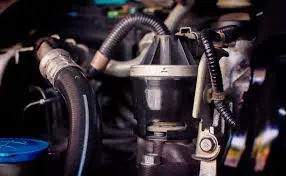Modern engines are the product of years of research, development, and environmental regulation. As concerns around emissions and fuel efficiency have grown, so too has the sophistication of the technology used in vehicles. One key innovation that has played a crucial role in reducing harmful emissions is the Exhaust Gas Recirculation (EGR) system.
What is the EGR System?
The EGR system is designed to reduce nitrogen oxide (NOx) emissions produced by internal combustion engines. It works by recirculating a portion of the engine’s exhaust gases back into the intake manifold, where it mixes with the incoming air. This process reduces the oxygen concentration in the combustion chamber and lowers peak combustion temperatures, which in turn reduces the formation of NOx gases.
NOx emissions are a major contributor to smog and acid rain and are known to have adverse health effects. The introduction of EGR systems has been a significant step towards meeting stringent emissions regulations, especially in diesel engines where NOx levels can be particularly high.
How the EGR System Works
In a typical EGR system, a valve controls the flow of exhaust gases back into the engine. The EGR valve opens and closes based on commands from the engine control unit (ECU), depending on operating conditions such as load, temperature, and speed. Modern systems may also include sensors to monitor the flow rate and ensure precise operation.
There are two main types of EGR systems: internal and external. Internal EGR involves the overlap of the intake and exhaust valves to allow gases to flow back naturally, while external EGR uses a separate valve and piping to redirect the gases. Most modern vehicles use the external method due to better control and reliability.
Benefits of EGR Technology
The main benefit of the EGR system is its ability to lower NOx emissions, helping manufacturers comply with environmental standards. Additionally, by reducing combustion temperatures, the EGR system can also improve engine efficiency in certain conditions, leading to better fuel economy.
However, EGR systems do have drawbacks. Recirculating exhaust gases can lead to soot and carbon build-up inside the intake manifold and EGR valve, which may affect engine performance over time. For this reason, regular maintenance is crucial to keep the system functioning optimally.
The Role of the EGR Cooler
In many modern diesel engines, the exhaust gases that are recirculated can be extremely hot. To manage this, an EGR cooler is used. This component lowers the temperature of the exhaust gases before they are sent back into the combustion chamber. Cooler gases help further reduce NOx emissions and prevent potential damage to the engine caused by high temperatures.
The EGR cooler works like a radiator. Hot exhaust gases pass through a series of small tubes or passages, and coolant circulates around them to absorb the heat. The cooled gases are then sent back to the intake manifold. This cooling process makes the EGR system more effective and extends the lifespan of the engine components.
Over time, EGR coolers can become clogged with carbon deposits or suffer from coolant leaks, leading to reduced efficiency or even engine damage. Regular inspection and cleaning or replacement of the EGR cooler are recommended, especially in vehicles with high mileage.
read more : Top Mistakes to Avoid in Market Trading
EGR Cooler Issues and Solutions
When an EGR cooler becomes clogged or fails, it can lead to various engine problems, including loss of power, increased emissions, overheating, or even coolant contamination. Symptoms of a faulty EGR cooler might include white smoke from the exhaust, check engine light, or coolant loss without visible leaks.
One solution to address a faulty cooler is to invest in a replacement EGR cooler that meets or exceeds OEM standards. For those seeking a reliable option, the EGR cooler from reputable manufacturers ensures proper function, reduced emissions, and restored engine performance.
Regular maintenance, including using high-quality fuel and keeping up with scheduled servicing, can help extend the life of the EGR system and its components. Vehicle owners should also be mindful of performance issues that could signal EGR-related problems, addressing them promptly to avoid more serious engine damage.
Conclusion
The EGR system plays a vital role in reducing harmful emissions and improving engine efficiency. Components like the EGR valve and cooler are essential to the system’s effectiveness and must be kept in good working order. Understanding how these parts function and recognising the signs of failure can help vehicle owners maintain performance while protecting the environment. Whether for compliance with emissions regulations or simply to ensure optimal engine health, paying attention to your EGR system is a smart move.

